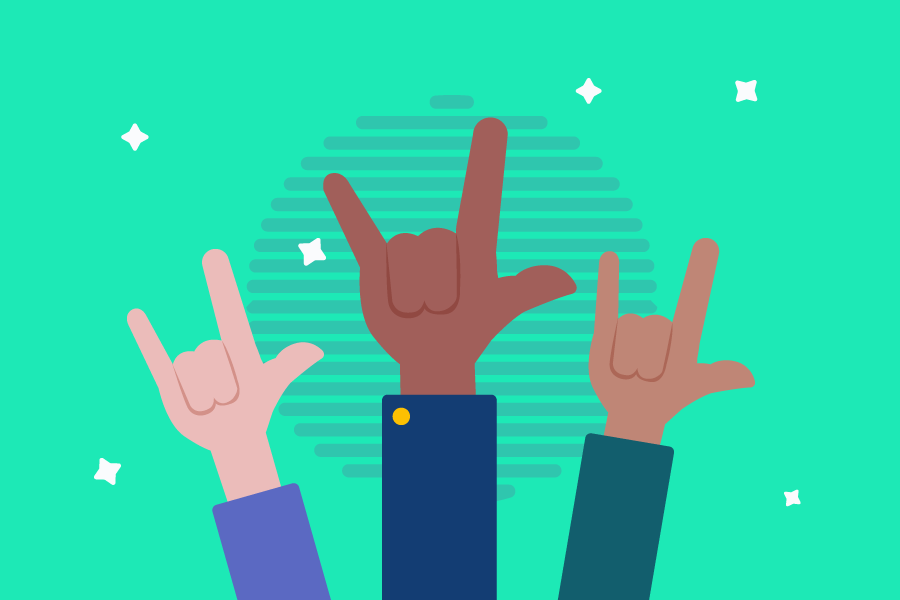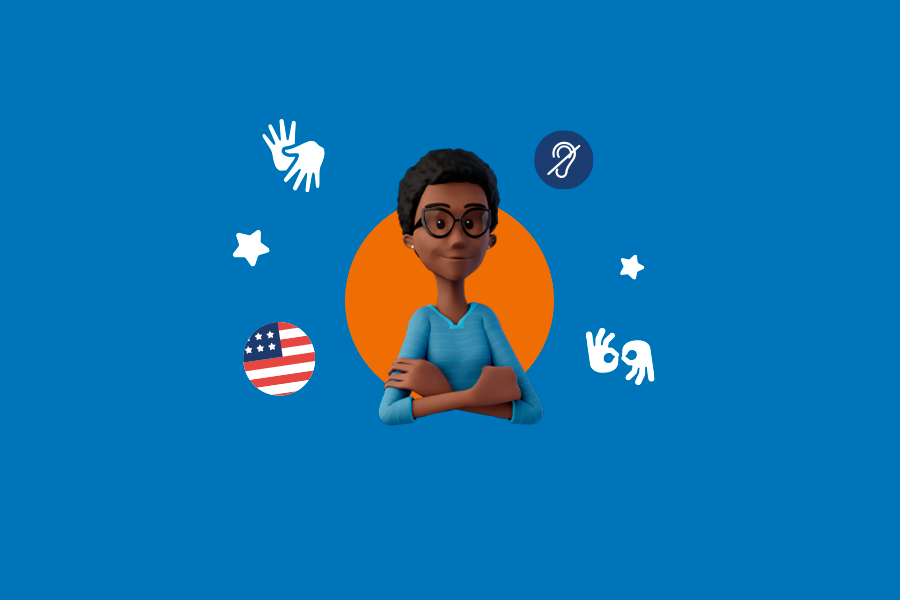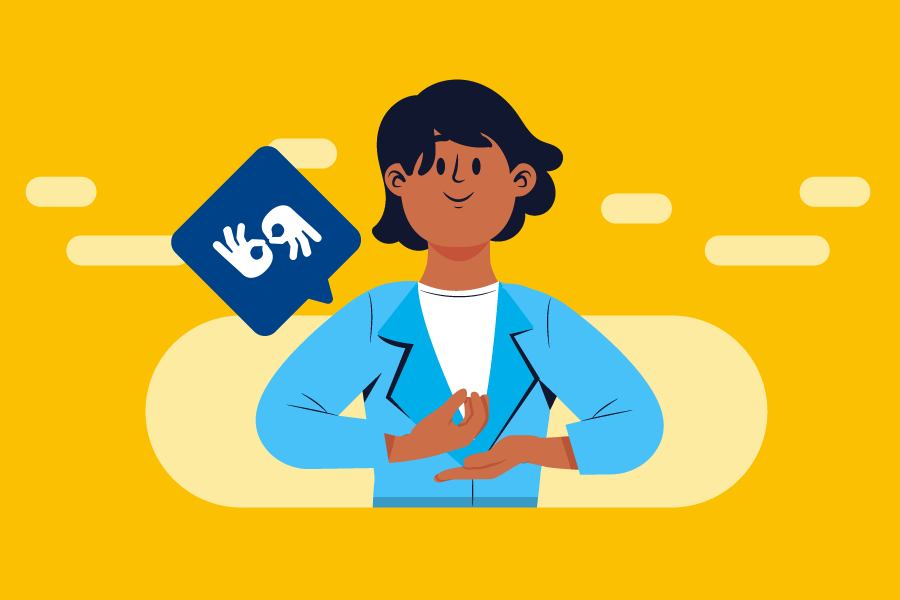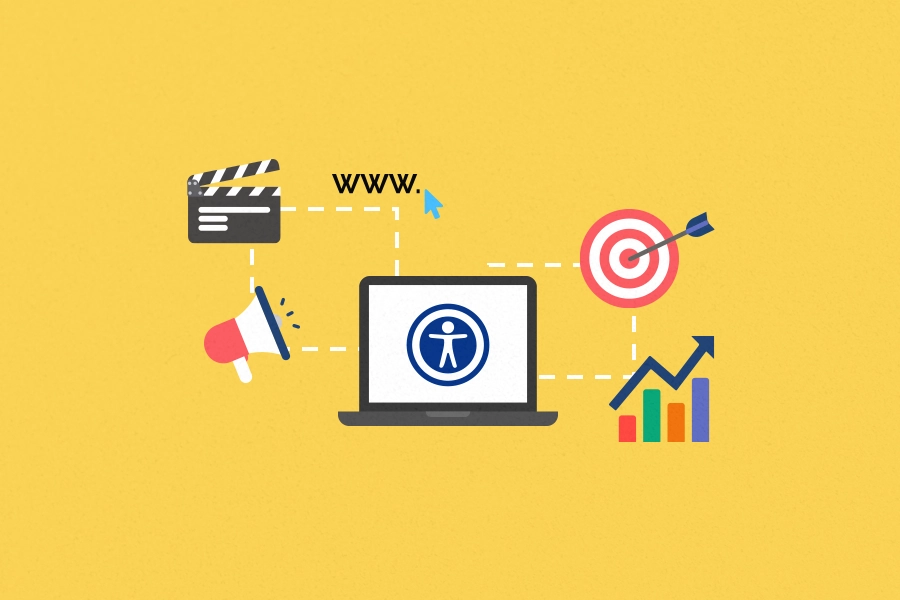
How to be an Ally to the Deaf Community

Whether walking down the street, in public transport, or at the office, it’s extremely likely that you have interacted with deaf people. However, it’s possible that you haven’t even noticed: Deafness is an invisible condition most of the time. You’ll hardly be able to recognize a deaf person just by looking at them because not all deaf people wear hearing aids and can, therefore, go easily unnoticed.
Over five percent of the world’s population – or 466 million people – has disabling hearing loss. But there are still many flawed stereotypes about the deaf community, which is why many of its members experience exclusion and discrimination.
There’s one main reason for that: Deaf people were traditionally encouraged to adapt to the lifestyle of hearing people. They were never allowed to fully develop a culturally Deaf identity and gain the tools they needed to access information.
Luckily, today we are seeing more and more actions challenging that old-school practice and looking to empower the Deaf community. Anyone can contribute to such a positive shift – so what exactly can you do to become an ally?
Learn about the Deaf community
There are two definitions of d/Deaf. First, there is the medical approach – deaf as a diagnosis. But then, there’s a bigger one – Deaf in the sense of cultural belonging. Being deaf is not just about whether or to which degree a person can hear, it’s related to the sense of belonging to the Deaf community, the relation to sign language and the Deaf identity altogether.
Deaf people think of themselves as different, but certainly not as disabled people. They might not be able to fully hear, but they can do everything that hearing people can – and perhaps even more.
People have traditionally left sign language to the Deaf community only – but why aren’t we learning the language ourselves? Just think about all the things you are missing out on. For example, sign language poetry is something incredible!
And yet, one of the main frustrations of the deaf community is the lack of recognition of the sign language, the most important carrier of the Deaf culture. The hearing culture has traditionally dominated the space and replicated privilege, instead of letting alternatives flourish.
Our society is still far away from equal access to information. Deaf people need to be allowed to develop their own identity, rather than be forced to adapt to one of hearing people. Hearing people should learn how to provide them with the tools to access information and have more confidence in themselves.
Supporting Deaf people by recognizing all sign languages (with all of their different forms around the globe) as complete, living languages with their own grammar and syntax is the first step to becoming an ally.
Get out of your shell – and interact!
There are many everyday situations that can make deaf people feel excluded:
- Healthcare; when the doctor doesn’t know sign language so it’s difficult to communicate the symptoms and diagnoses.
- Institutions; when using voice or music to communicate important messages.
- Public transport; when announcing the stops only by voice.
- Culture; when plays in theatres or movies lack sign language interpreters.
Being an ally is all about being conscious of what’s happening around you. If you see someone around you struggling with everyday situations, approach them to see what’s the problem and offer to help.
Even if you are not sure, just ask.
When interacting with a deaf person, know that breaking the communication barrier is easier than you might think. Even though you might fail or embarrass yourself, try. You’ll see that there’s nothing to worry about and that the other person wants to communicate and they’ll do their best to make it happen too.
Hearing people sometimes forget what it’s like to interact with deaf people and create mishaps on accident – such as sending a voice message on WhatsApp. But these are easily forgettable if you simply show that you’re trying.
Seeing the effort really is a gamechanger for deaf people. So why not learn a few signs in sign language? Just remember that there are different ones around the world, such as the ASL in the US, Libras in Brazil, or FSL in France. So do some research – even a sign like “thank you” or “hello” can brighten a deaf person’s day.
Things you can do
There are ways you can support the Deaf community in everyday life, in family, at the workplace, or even when doing business.
One of the key things to realize is that deaf people are very visual – so having a screen or written document to share information can go a long way. Whether in communication, in presentations, or on the website, make sure to use the right fonts and don’t make your content too colorful or overwhelming so it’s as legible as possible.
But be careful: Also know that not every deaf person can read – so many situations may require an interpreter. If that’s the case, make sure to avoid the ultimate ‘faux pas’: When talking to a deaf person, look at them, not the interpreter.
Sadly, 1 in 4 deaf people has left a job due to discrimination. So, if you hire or work with a deaf person, and you aren’t sure about something, ask them. Before they arrive for their first day, inquire about whether there’s anything they need and prepare the environment to make them feel welcome.
In general, try to focus on digital accessibility. If you’re creating a corporate video, make sure to add sign language interpretation or at least captions. This will help you include people who are traditionally marginalized but also reach a bigger audience.
So, step up against injustice. For example, if you witness that a deaf person was refused a promotion opportunity because of his impairment, act. But don’t make the decision for the deaf person, include them! In these situations, you can become an ally by asking him about what they would like to do and if there’s a way you can help to support them in that. For example, do they want to talk to the employer? Offer to interpret for them.
It is estimated that by 2050 over 900 million people – or one in every 10 people – will have disabling hearing loss. Many people have hearing impairments and, in the future, many of us are going to suffer some kind of hearing loss, so we’ll probably all depend on captions, and perhaps even sign language.
By empowering the Deaf community, all of us can benefit from greater cultural exchange and more diverse ideas. Just by shifting your mindset to proactively work towards that, you’re already on the way to becoming an ally.


